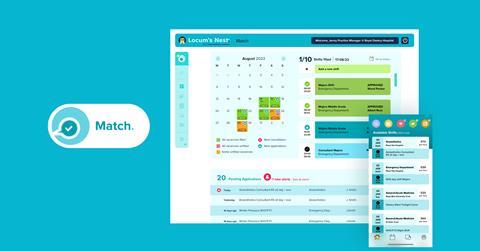Dr Ahmed Shahrabani explores how offering flexibility to bank staff helps reduce agency spend
With a committed bank-first approach, NHS trusts benefit from increased flexibility, agility, and transparency. Through every step of the funnel, from the creation of a bank shift to deploying integration with your e-rostering tool of choice, we show how NHS trusts have the best possible chance of filling their vacant shifts with their staff bank, while drastically reducing their agency spend, via a dedicated, user-friendly bank management solution.
Sponsored by
The Locum’s Nest system enables hospital managers and rota coordinators to give plenty of notice to bank staff by creating and sharing shifts in advance on the Locum’s Nest platform. But at the same time allows flexibility for bank staff to apply to and complete last-minute shifts, within safety barriers. Offering such flexibility to bank staff restricts the criteria and number of shifts going to agency, increasing efficiencies from within.
How dedicated bank management software allows for flexibility when real life kicks in…
With a bank-first approach top of mind, throughout 2022, hundreds of thousands of shifts were published on Locum’s Nest, out of which nearly 90 per cent were planned and published in advance in the job listings. Planning shifts is the best practice for all parties involved:
- Healthcare professionals can better plan their lives
- Hospital managers are enabled to better plan their rotas meaning fewer last-minute struggles to fill gaps
- Enhanced financial planning and accrual process
However, real life must be considered, which has become increasingly important since the covid-19 pandemic. Sometimes, there are last-minute gaps in the rota with a bank worker willing to fill them but no staff on the ground to post the shift. This is where Locum’s Nest’s retrospective timesheet option comes into play. The shift can then be created automatically by the healthcare professional to allow for accurate reporting whilst the healthcare professional gets paid as usual. In 2022, approximately 12 per cent of all shifts worked through Locum’s Nest were last-minute shifts – where a timesheet was submitted, retrospectively creating the shift by a healthcare professional. Through Locum’s Nest Intelligence, NHS trusts can harness their data today, to impact their future tomorrow. Organisations can filter by department and monitor planned vs unplanned shifts, so if there are any potential issues with misuse, they can be rectified quickly.

The power of interoperable ‘best-of-breed’ technology solutions: Why two can be better than one?
When considering or launching a new e-rostering tool, from our experience, we believe it is strategic to keep a bank-first approach in mind and have a dedicated and success-proven bank management solution to run alongside it. Two software systems perfectly integrated can be better than one, ultimately aiming for the “best-of-breed” technology solution that seamlessly fits your organisation’s workforce needs.
Integrating Locum’s Nest Match with your e-rostering tool of choice has multiple unparalleled benefits:
- Enable your organisation to grow its staff bank by making your vacant bank shifts visible to the 50,000+ healthcare professionals using the Locum’s Nest mobile app. Through our staff bank growth module, onboard new substantive staff to your organisation to grow your staff bank sustainably and organically, reducing agency reliance.
- Improve shift fill rate and drastically reduce agency spend by deploying integration enabling rate harmonisation while reducing any off-system booking. With our bespoke bank management software, you can create and implement a bespoke rate violation process to notify appropriate stakeholders and pan groups.
- Eliminate operational disruptions directly impacting safe staffing levels by using a user-friendly bank management system your medical workforce is already familiar and engaged with. Without a dedicated bank management software, as people get accustomed to a new e-rostering tool it is expected to see the shift fill rate drastically drop during the transition period – sometimes down to 10 per cent, while agency spend increasingly increased – reaching nearly £6m monthly for an average acute trust.
Ultimately, using the wrong software for your organisation’s bank management needs can lead to long-term operational damage and unlocked efficiencies, from not being able to keep up with the reality of NHS medical vacancies to damaging staff engagement and missed opportunities to leverage workforce capacity from within such as facilitating collaborative staff bank growth.
To ensure your organisation benefits from a bank-first approach, book a 20 minute discovery call with our team here.

Topics
Harnessing open workforce technology to enhance NHS staff wellbeing

Dr Ahmed Shahrabani, co-founder of Locum’s Nest, explores how open workforce technology transforms NHS staff wellbeing while having a positive impact for NHS trusts
- 1
- 2
- 3
- 4
 Currently
reading
Currently
reading
Improving workforce efficiencies with a bank-first approach







































